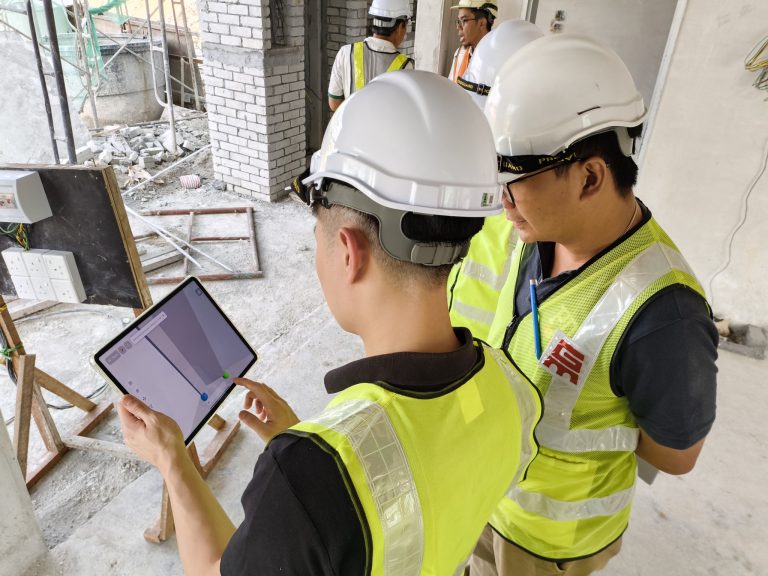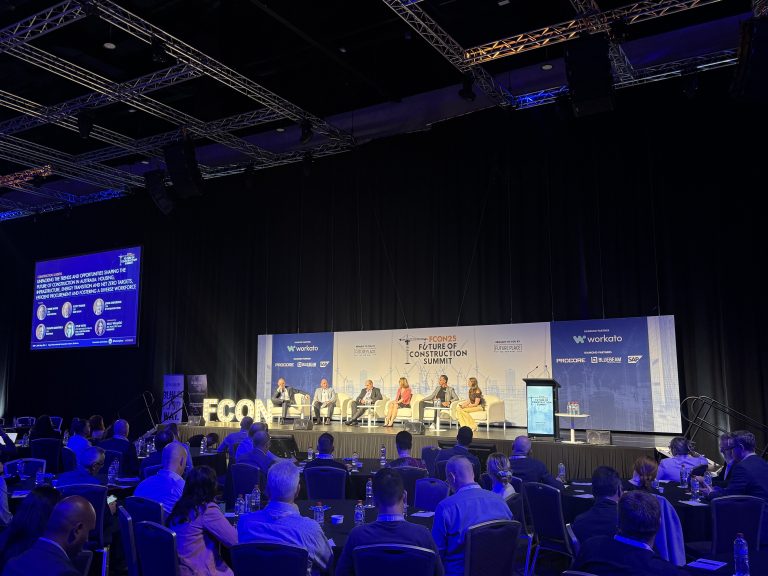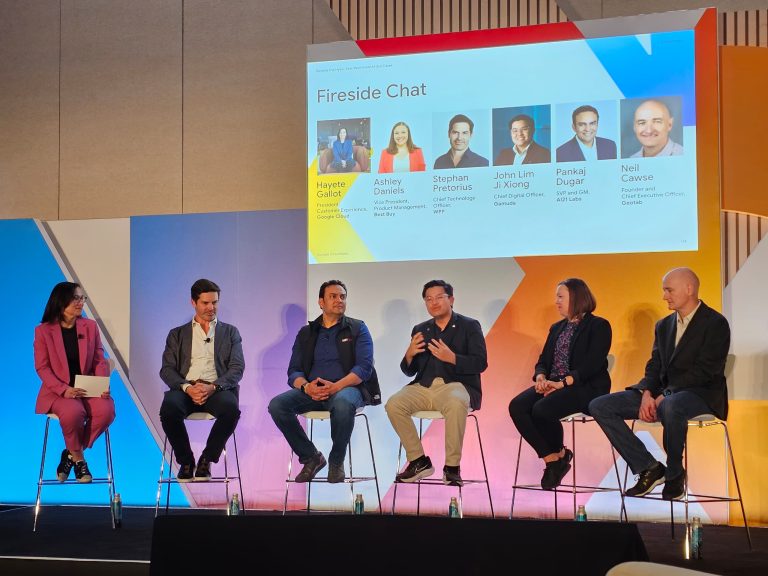As featured on TunnelTalk
The globally affiliated journal uncovers the backstory of the award-winning autonomous tunnel boring machine. Article posted with permission from Shani Wallis, TunnelTalk. Original post in 2019 here.

Fully automatic TBMs may be some way off but the reality of autonomous TBM operation is already here and winning awards as the way of the future. The system is based on custom artificial intelligence control algorithms analysing machine data in real time and assuming control of the various operational subsystems of the TBM with minimal human input.
Developed by a team of young engineers and technicians in Kuala Lumpur, Malaysia, the autonomous TBM operating system is more than a theoretical idea or a laboratory prototype. The development team, employed by Gamuda and working for the MMC-Gamuda JV on the Line 2 metro project of the Klang Valley MRT system, has applied the system to 10 of the 12 TBMs currently excavating 13.5km of twin running tunnels under the city centre of the Malaysian capital. The 10 Variable Density TBMs, supplied by German manufacturer Herrenknecht, have had a separate industrial computer each added to their plcs (programmable logic controllers) to provide autonomous operation with human oversight rather than control.



While some may argue the wider legal and liability implications of a system that moves responsibility from a human operator to a machine system, the developers say that the proven success of TBMs under autonomous operation is what is preferred and required when operating under the most sensitive of conditions, when the risks of human error or erratic machine operation would cause the most damaging of potential consequences. That is when one needs the machine to manage by itself to react and respond as required, explained the development team.
They add that a machine fitted with the system will respond more quickly and more sensitively than a human operator when, for example:
- correcting line and level to steer the machine;
- adjusting the parameters of the TBM to maintain plenum pressures for supporting the face and controlling ground loss or over excavation and avoid any subsequent surface settlement;
- controlling the speed of advance;
- adjusting the speed of the screw conveyor to maintain face pressure in EPB mode operation;
- managing the slurry circulation in slurry mode operation;
- and other mechanical functions and systems.
The potential for autonomous control of these functions has been available in the past. The difference that the team in Malaysia brings to the possibility is the gathering of tremendous volumes of data from monitoring sensors, adding that to the capabilities of modern computing and big data management systems, applying the data to machine learning and the development of artificial intelligence, and installing the developed technology to real project TBM operations.
For the past three years, autonomous operation of TBMs, from central oversight control centres, has been applied to the 10 machines working on the KVMRT Line 2 project, with upgrades and improvements added as they have been made available. With that experience in hand, the team entered the system as a nomination for the leading series of international industry awards – first the ITA Awards of the International Tunnelling and Underground Space Association in the category of Technical Product or Equipment Innovation of the Year and secondly in the Tunnelling Festival Awards in the UK sponsored by the BTS (British Tunnelling Society) in the category of Innovation in Tunnel Excavation. Described by judges of the awards as a game changer for the global tunnelling industry, the system won the category for both – the ITA Award in November in Miami and the UK Award in early December in London. This is deserved recognition of the system and its developers and an indication that the system is here to stay and to expand further into the industry.
Back story of the innovation
Inspiration for the development of the system and its capabilities is the brainchild of leading engineer in the industry Gus Klados, who has supported and guided the young engineers in his team on the KVMRT Line 2 project where he is Director-Tunnels Management for the MCC-Gamuda JV.
“The genesis for the system has a long history,” explained Klados. “The idea came to me while working on the Marine Running Tunnels of the Channel Tunnel under the sea between the UK and France, when I realised that the steering problems of the TBMs were always caused by drivers trying to interpret or understand what a computer screen (supplied by ZED company) was showing them regarding the position of the machine, and instructing another computer, via a joystick, to change direction. Each TBM operator had different levels of skill and different levels of operator success. I felt there had to be a better way.”
From the Channel Tunnel, Klados joined Hochtief in 1991 to work on the Delivery Tunnel North of the Lesotho Highlands Water Project in Southern Africa, where, as part of the Hochtief/Marti/Concor JV, he was engaged to manage the operation of the telescopic shield TBM supplied by Wirth of Germany. “When I joined the project, I asked my bosses (Otto Brach and Franz Remmer) to allow me to spend about 250,000 Deutschmarks at the time and order a ‘black box’ from ZED to steer the Wirth TBM automatically. Eventually they agreed, emphasising that I was responsible if it did not work.”
“Well, it did, and after a while of faxing back vertical and horizontal shield position diagram reports weekly, Herr Brach phoned and asked if I faked the diagrams. The ZED automatic steering system kept the TBM within +/-20mm on the designed tunnel axis for 19km.”
Fast forward to 2017 and in TBM design meetings, Klados requested that the four new VD TBMs being procured for the KVMRT Line 2 project be supplied with automatic steering. It did not happen, even with promises not to hold the manufacturer responsible should problems occur.
In frustration, Klados challenged his own team of engineers to produce an auto-steer system. “I argued that, if it was possible 25 years ago on the project in South Africa, with the computing power we had available at the time, it must be possible with the modern computers and with the ideas of artificial intelligence (AI). I was encouraged by our electrical superintendent, Russell Betty, who had a lot of plc experience and a deep understanding of how TBMs operate, and supported by bright young engineers including Justin Chin, John Lim, Liew Kit Shen and others, who were able to write and test the necessary code. Ng Hau Wei, then General Manger Tunnelling and now Deputy Project Director for the MMC-Gamuda JV, took the effort on board and provided top management support.”
With time, the team went further than the initial challenge and developed the Autonomous TBM System with AI capabilities. Over and above the auto-steer function the system manages the excavation thrust and speed of the TBM, while maintaining the face support pressures. In EPB operation of the VD TBM machines, it controls the speed of the screw conveyor in relation to the advance speed to maintain face support pressure, and in the slurry mode, the system manages the slurry circulation system, all allowing the operators to concentrate in other functions of the machine.
“We have introduced the system in all the TBMs we operate on the project,” said Klados, “so we have a wealth of experience now in operating these autonomous TBMs and of debugging the systems over many kilometres. We can see the potential of many new possibilities and eventual fully automatic operation of tunnel excavation systems.”
Additional safety accolade
In addition to the technical innovation awards, the work by the MMC-Gamuda JV on the KVMRT Line 2 project also received two awards in November 2019 from the British Safety Council (BSC) – one for overall excellence in upholding health and safety at the workplace, and the other for acing a comprehensive safety audit. In earning a five-star score in the BSC Five Star Occupational Health & Safety (OSH) Audit, the JV received the coveted Sword of Honour Award as one of the 84 organisations worldwide that has made the cut for the accolade.
The BSC Five Star Occupational Health & Safety Audit requires the organisation to undergo a comprehensive and robust evaluation of its OSH policies, processes and practices and includes documentation review, interviews with senior management, employees and other key stakeholders, together with sampling of on-site activities over a two-week period. It also measures the performance of the organisation against key health and safety management best practice indicators, with a detailed review of more than 60 component elements, and with the addition in 2019 of mental health awareness and application of building information modelling (BIM) into the scope of the audit.
On receiving the Sword of Honour in London in November, the MMC-Gamuda Project Director of the Board, with direct control of the Safety Department, Datuk Paul Ha Tiing Tai, said: “With these awards, we affirmed our proactive stance towards continual improvement in managing risks and striving for safety and health best practices. More than just delivering projects, we want to carve out a national legacy that will boost the underground construction industry.”
References:
- Equipping TBMs for tough conditions – TunnelTalk, November 2019
- First TBM breakthrough for KVMRT Line 2 – TunnelTalk, February 2019
- TBM excavation begins for Kuala Lumpur Line 2 – TunnelTalk, March 2018
- Kuala Lumpur opens tunnel Training Academy – TunnelTalk, December 2011




